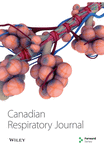Prevalence of High Epworth Sleepiness Scale Scores in a Rural Population
Abstract
BACKGROUND: Increased daytime sleepiness is an important symptom of obstructive sleep apnea (OSA). OSA is frequently underdiagnosed, and the Epworth Sleepiness Scale (ESS) can be a useful tool in alerting physicians to a potential problem involving OSA.
OBJECTIVE: To measure the prevalence and determinants of daytime sleepiness measured using the ESS in a rural community population.
METHODS: A community survey was conducted to examine the risk factors associated with ESS in a rural population in 154 households comprising 283 adults. Questionnaire information was obtained regarding physical factors, social factors, general medical history, family medical history, ESS score, and self-reported height and weight. Multivariable binary logistic regression analysis based on the generalized estimating equations approach to account for clustering within households was used to predict the relationship between a binary ESS score outcome (normal or abnormal) and a set of explanatory variables.
RESULTS: The population included 140 men (49.5%) and 143 women (50.5%) with an age range of 18 to 97 years (mean [± SD] 52.0±14.9 years). The data showed that 79.2% of the study participants had an ESS score in the normal range (0 to 10) and 20.8% had an ESS score >10, which is considered to be abnormal or high sleepiness. Multivariable regression analysis revealed that obesity was significantly associated with an abnormal or high sleepiness score on the ESS (OR 3.40 [95% CI 1.31 to 8.80).
CONCLUSION: High levels of sleepiness in this population were common. Obesity was an important risk factor for high ESS score.




